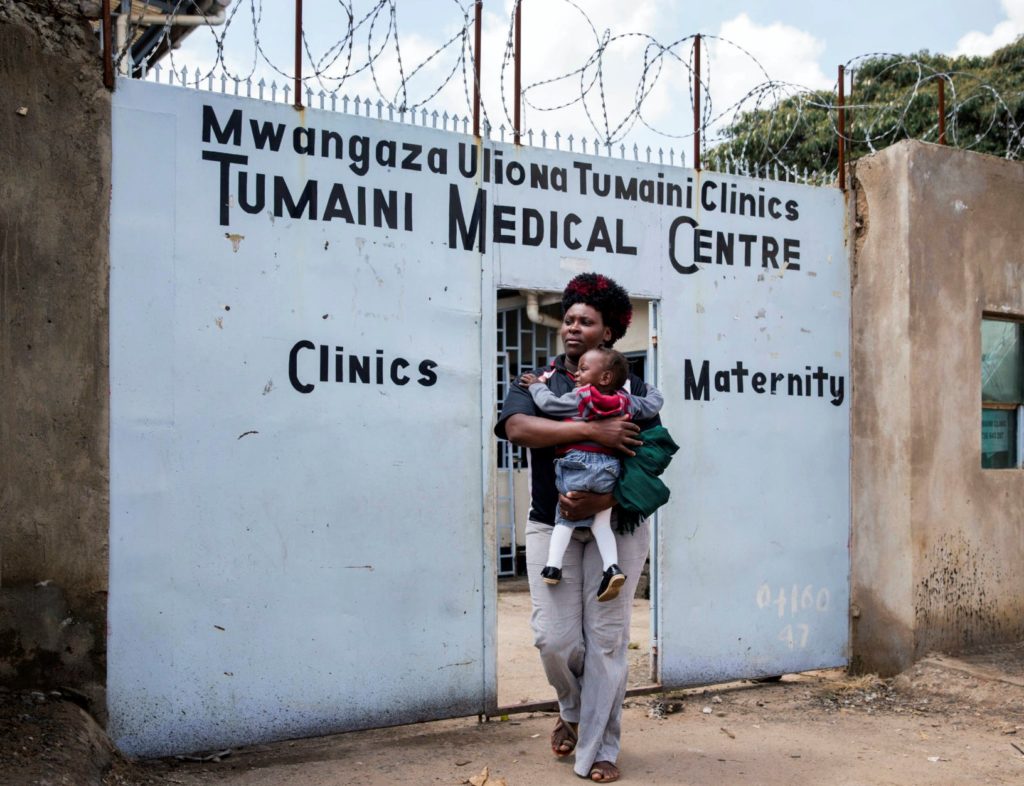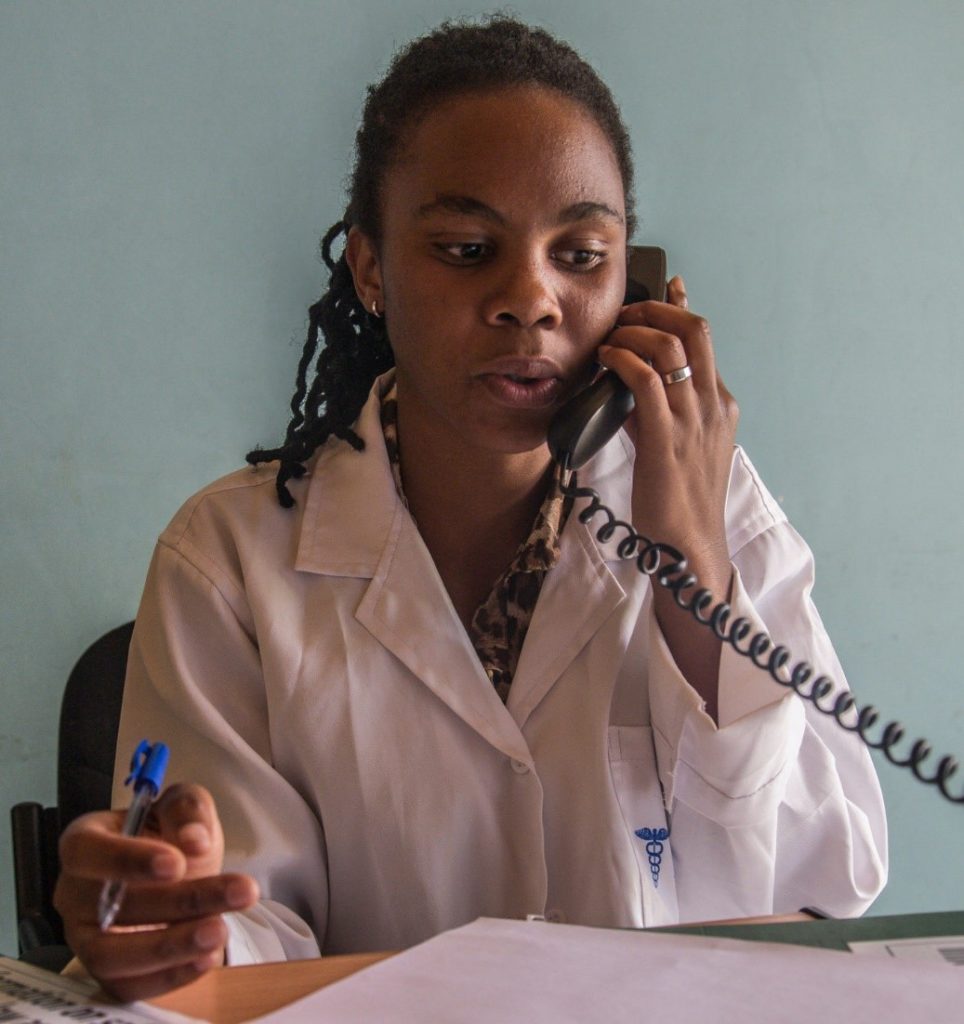How is the COVID-19 global pandemic affecting family planning and reproductive health services? A Global Health: Science and Practice article outlines how health care providers can adhere to physical distancing guidelines in their countries while adapting services to accommodate their clients’ needs. We talked with authors Kavita Nanda, Markus Steiner, and Elena Lebetkin, from Knowledge SUCCESS partner FHI 360, to understand how providing family planning and reproductive health services can be adapted. This interview has been edited for clarity.
Q: What are the most important takeaway messages from your article?
Kavita Nanda: This is a terrible pandemic. Services are going to be disrupted, and things are going to change. We wanted to emphasize that family planning, and, more generally reproductive health services, remain vital for programs to continue. We wanted to offer suggestions on how to do that during this time period.
Elena Lebetkin: We feel it’s possible to maintain quality services in this time, but a different approach will need to be used to continue to provide those services.
KN: We know that it’s not going to be easy especially with commodity shortages and lockdowns, but we thought it was important to get the message that this shouldn’t be ignored.
Markus Steiner: We wanted to give a roadmap but acknowledge that following the roadmap is going to be a challenge given all the resource constraints.
KN: Also, we wanted to show that there’s evidence that what we’re proposing is safe and continues to maintain high method effectiveness.
Q: Have providers seen disruptions in family planning and reproductive health services?
KN: As a member of the American College of Obstetricians and Gynecologists (ACOG) Long-Acting Reversible Contraceptive (LARC) Working Group, I helped develop the piece on contraception to be part of the FAQs in the [ACOG] document. A lot of people on this committee are also working in hospitals and clinics and facing disruptions because nonessential services were cancelled. They looked forward to getting this guidance [from ACOG] to help them put together roadmaps and detailed clinical guidelines to maintain care for women.
Elena, Markus, and I talked about how this is going to be an even bigger potential problem in the countries that we are most concerned with where there are already issues with making sure that women get the contraceptives they need, so we adapted those FAQs for the low- and middle-country (LMIC) setting. But, this is a roadmap. These are just suggestions. Each location, country, policy maker, and provider will have to adapt these for their specific context. And it’s not going to be easy given the lockdowns and potential lack of commodities.

Q: What are some of the biggest challenges that LMIC settings are experiencing with providing family planning and reproductive health services?
KN: The main challenge is social distancing. The World Health Organization (WHO) has tiers of countries and how they should proceed depending on where they are in the epidemic, but they all have social distancing as part of them. There are lockdowns or some version of a lockdown in most countries, so community health workers aren’t going out and clinics are closed. What can providers do to help women who need contraception during this time? We found in some of our studies that cell phones are ubiquitous. So, we’re proposing they use telehealth both to provide counseling and refills for women who are already using short-acting contraceptives but also to screen new clients. You don’t have to see someone in person to see if they’re eligible for short-acting methods or even long-acting methods but you have to bring [the clients] in to insert [the method]. A lot of the screening can be done over the phone; you don’t need a pelvic exam for most methods.
To address the commodity shortage, a lot of women with implants are approaching their due dates for implant removal. Data show that extended use of implants is effective and safe. However, there has been some disagreement in the literature about the effectiveness, so extended use has not been recommended by WHO yet. But, especially in the face of decreased commodities and unavailability of face-to-face visits, we think that counseling women that their implants are good for longer than the labeled duration is an important aspect of decreasing the commodity issue, saving the commodities for new users, and providing care while not having face-to-face visits.
EL: Not just implants, but also IUDs.
MS: It’s super important and a very easy actionable thing. Getting the message out about off-label use of IUDs and implants for longer duration is a simple counseling message.
KN: Another challenge is [serving] postpartum women. Many have made efforts to increase the use of postpartum long-acting methods, which has been challenging. Especially now, since we don’t know whether women will be able to go back once they leave after they deliver, it’s even more important that women get the contraceptive of their choice. Even if they are using lactational amenorrhea, they could still be given a prescription [for a short-acting method] that they would normally get later and just be given instructions on when to start.
MS: Or receiving postpartum LARC now where the policy guidelines haven’t changed.
KN: Also, this makes self-administration of injectables even more important. Women can be taught how to self-inject after they deliver and be given their supplies.

Q: What are the challenges to ramping up telehealth?
MS: In the United States, we’ve been trying to ramp up telehealth for years now in a very resourced environment and running into difficulties, so it’s not an easy thing to ramp up where resources are more scarce.
KN: That’s true that they’ve been trying to ramp it up for years, but it’s happening now, all of a sudden, it’s working in the US. We do think [implementing telehealth in LMICs will be] more challenging than the simple message of extending duration of implants, but I don’t think that it’s something that’s unachievable, it just will take more work.
EL: Sometimes setting up the systems for telehealth can be a little bit of a challenge particularly in countries where smart phone ownership is limited. In these settings, telehealth systems need to rely on SMS-based rather than app-based communications, which can be challenging and costly to set up and manage.
Q: What considerations do other stakeholders (e.g., policy makers, implementing partners, program managers) have to make in adapting their family planning programs?
KN: Extended use [of LARC] can be discussed at an individual provider level, but would be better if it came from the policy maker, which would lead to wider implementation. Telehealth can be done at any level, but to be more successful, it has to be at the broader level, so that systems are in place and telehealth visits can be conducted while maintaining privacy and confidentiality, etc.
MS: And reimbursement needs to be worked out.
KN: Also, not all telehealth has to be fancy video conferencing. SMS can be a little difficult to go back and forth, but a telephone call can be used to screen women for contraindications or to talk to women who are having side effects from methods. They don’t always need an exam. Sometimes they do, and in those cases, women will need to come in, but some side effects can be managed safely over the phone.
Q: If the reader had to choose only one recommendation to implement, which would you make a priority?
KN: I think all of them are important [laughs]. An easy one to start is the extended use of LARC. We’ve thought this was important for a long time. Especially now, it’s relatively easy to do and can be implemented at a policy level and could have a large impact on decreasing the need for new commodities and comply with social distancing.
MS: I agree. It’s actionable and saves resources. There are so many good reasons for it. It’s evidence-based that implants work much longer than they’re labeled for. Same for IUDs.
EL: More generally, ramping up the way we use telehealth in these situations is very important. We need figure out how to continue providing services and continue counseling women without having to see each other face-to-face, so we’re not increasing risk of spreading disease. But we have to continue providing services, and there has to be a platform for it.
KN: Telehealth for contraception is not in a vacuum. Other routine services also need to use telehealth. As that is expanded or rolled out, sexual and reproductive health services should be part of that.
Q: Are there other recommendations that are immediately actionable?
KN: Self-injection is immediately actionable. Sayana Press is available in many places and some women are using it, but that could certainly be expanded to make sure that women using injectables don’t drop off.
EL: Also, multi-month scripting, as commodities allow, of course. As an example, countries all have different guidelines about how many packs of pill you can receive at the same time, but there’s plenty of evidence that it’s fine to given women an entire year’s supply at one time. So, as commodities allow, it’s important to give women enough commodities so they don’t have to come back to a facility, pharmacy, or wherever they receive services.
KN: Another easily actionable item, especially with probable commodity shortages, is using telehealth to educate women on fertility awareness.





